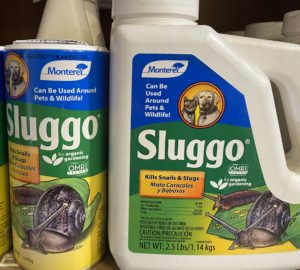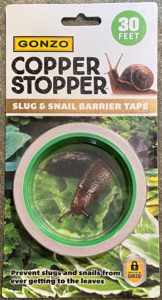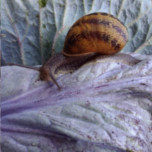Snails and slugs are among the most bothersome pests in many garden and landscape situations. Snails and slugs move by gliding along on a muscular “foot”. This muscle constantly secretes mucus, which later dries to form the silvery “slime trail” that signals the presence of either pest; both pests have voracious appetites.
Snails and slugs are most active at night and on cloudy or foggy days. On sunny days they seek hiding places out of the heat and bright light; often the only clues to their presence are their silvery trails and plant damage. During hot, dry periods or when it is cold, snails seal themselves off with a parchment-like membrane and often attach themselves to tree trunks, fences, or walls.
Damage they can do
Snails and slugs feed on a variety of living plants as well as on decaying plant matter. On plants, they chew irregular holes in leaves and flowers and can clip succulent plant parts. They can also chew fruit and young plant bark. Because they prefer succulent foliage or flowers, they are primarily pests of seedlings and herbaceous plants, but they are also serious pests of ripening fruits, such as strawberries, artichokes, and tomatoes, that are close to the ground. However, they will also feed on foliage and fruit of some trees; citrus is especially susceptible to damage. Look for the silvery mucous trails to confirm slugs or snails and not earwigs, caterpillars, or other chewing insects caused the damage.

Earth and pet-friendly Sluggo!
The base ingredient of Sluggo is naturally occurring Iron Phosphate that does a great job of controlling snails and slugs in the garden while not harming other creatures including pets and people; and as it breaks down it actually nourishes the plants.
Make your environment less snail and slug friendly
A good snail and slug management program relies on a combination of methods. The first step is to eliminate, to the extent possible, all places where snails or slugs can hide during the day. Boards, stones, debris, weedy areas around tree trunks, leafy branches growing close to the ground, and dense ground covers such as ivy are ideal sheltering spots. Reducing hiding places allows fewer snails and slugs to survive. The survivors will congregate in the remaining shelters, where they can more easily be located and eliminated.
Note, there will always be shelters that are not possible to eliminate e.g. low ledges on fences, the undersides of wooden decks, and water meter boxes. Just be sure to locate vegetable gardens or susceptible plants as far away from these areas as possible. This will not only protect your plants; it will also reduce the capacity of these pests to hide and proliferate.
Choose and locate plants carefully
Choose snail-proof plants for areas where snails and slugs are dense. Many plants resist damage from snails and slugs including begonias, California poppy, fuchsias, geraniums, impatiens, lantana, nasturtiums, and purple robe cupflower, and many plants with stiff leaves and highly scented foliage like lavender, rosemary, and sage. Most ornamental woody plants and ornamental grasses are also not seriously affected.
A penny apiece bounty is a great incentive for kids. Remember to tightly secure the bag before putting into the trash OR you could turn your catch into escargot.

Use barriers to protect susceptible plants
Snails and slugs favor seedlings and plants with succulent foliage and these plants must be vigilantly protected. Some plants that are seriously damaged include basil, beans, cabbage, dahlia, delphinium, lettuce, marigolds, strawberries, and many vegetable plants.
Copper barriers are effective because the copper reacts with the slime the snail or slug secretes, causing a flow of electricity — to take advantage of this just put 2 widths of copper tape around your planting beds.
Proper water management
An important tool in your anti-snail and slug arsenal is careful irrigation. Avoiding over-watering and/or using drip irrigation will reduce humidity and moist surfaces, making the habitat less favorable for these pests.
Snail and slug baits should be chosen carefully
Snail and slug baits can be effective when used properly in conjunction with a cultural program incorporating the other methods discussed above. However, baits alone will not effectively control snails or slugs in gardens that contain plenty of shelter, food, and moisture.
Note, do not use salt to destroy snails and slugs; it will increase soil salinity – making the cure worse than the illness.
Follow us in Social Media
